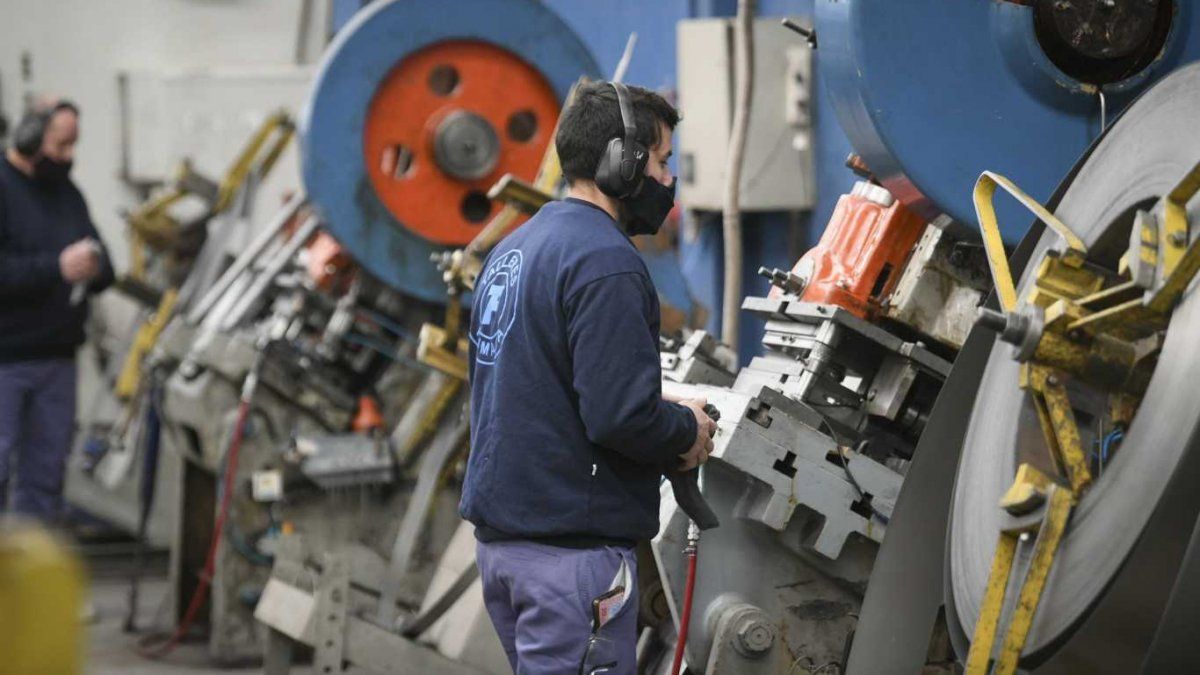By case, according to the survey carried out by the CAME, SME retail sales fell 3.1% in November year-on-year, to accumulate five consecutive months of decline.
Meanwhile, according to the report of the Association of Metallurgical Industrialists of the Argentine Republic (ADIMRA), metallurgical activity October had a growth of 3.4% compared to the same month last year, but presented a fall of 2.6% compared to September“reflecting a slowdown in the growth of activity.”
“At the sector level, the growth rate in most metallurgical items also slowed down. For its part, the agricultural machinery sector registered a sharp drop in its level of activity (12.2%)”, they pointed out from the entity. “On the contrary, the items that pushed the most upwards were Foundry (9.8%), Auto parts (8.2%) and Medical equipment (7.9%) and registered increases above the general average,” they added.
In this scenario, this week the INDEC will announce the industrial production and construction activity indices for October. In both cases, private projections project some stagnation.
“After the marginal contraction observed in the month of September (0.2% monthly without seasonality), We estimate another contraction in October, around 0.5% MoM (+8.7% YoY), reaffirming the contractionary trend of the manufacturing industry”, they analyzed from the LCG consultancy, and detailed: “This behavior would be explained by negative performances in most of the industries, highlighting the food industry, as a result of a lower performance in the meat sector (-7% m/m se) and oily; in contrast, the only industry that presented a positive performance was the automotive industry (+4% m/m se), although it would not compensate”.
Meanwhile, regarding the activity of the buildingfrom the firm they estimate that it will be maintained “practically unchanged from the previous month, after two consecutive months of contraction (2.3% MoM in August and 2.9% MoM in September), as a result of contrasting behaviors observed in the main indicators of the sector (+5% monthly in the construction index, but -7% in the cement office).
Analysis
Analyzing this context, Martín Calveira, a research economist at the IAE Business School, pointed out that “Economic activity slows down in the face of inflation and uncertainty.” “Naturally, the performance of economic management influences expectations and economic decisions, which translates into the month-on-month slowdown,” the analyst said.
For their part, from Ecolatina they pointed out that “Toward the end of 2022, signs of a cooling off in economic activity are beginning to be observed”. “Although the marked recovery of the first part of 2022 will mean that this will not be reflected in the average growth for the year, added to the fact that there was a lesser than expected impact on the real economy of the June-August financial crisis and the restrictions to imports at the end of June, we anticipate that there will be a weaker performance of the economy in the remainder of the year and, mainly, in 2023”, they remarked from the consultancy.
“In this line, economic activity fell in September (0.3% MoM) after five months of expansion, and the estimates for October predict a new stagnation/fall. In any case, the GDP would have grown 1.7% in seasonally adjusted terms in the third quarter, so the impact of the slowdown in the growth of the economy would be seen with greater force starting in the fourth quarter of the year,” added a signature report.
In this sense, two main elements stand out behind this dynamic: “The change in course of economic policy towards a more contractive bias, which appeared with the pragmatic turn of the Government after the marked inflationary acceleration resulting from the financial crisis of the mid- of year; and the appearance of exogenous risks, which could imply a more limited growth scenario in the coming year”.
In this context, from Ecolatina they expect a “limited” growth of the economy in 2023, “slightly above 1%”. “Now, if the risks increase or decrease, alternative scenarios also open up: a more optimistic one, in which the pro-consumer bias remains strong, the impact of the drought is not as harmful and the expectations regarding the elections they bring some financial calm; and a pessimistic one, where the lack of foreign currency becomes critical and the Government fails to avoid an abrupt jump in the exchange rate in order to order the external front, with strong negative consequences in terms of inflation and economic activity”.
Source: Ambito
David William is a talented author who has made a name for himself in the world of writing. He is a professional author who writes on a wide range of topics, from general interest to opinion news. David is currently working as a writer at 24 hours worlds where he brings his unique perspective and in-depth research to his articles, making them both informative and engaging.




